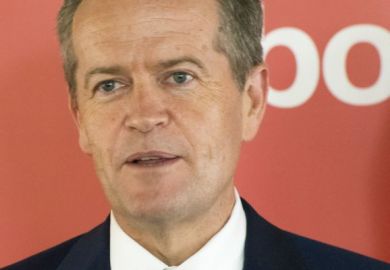It is far from straightforward to enact a university merger in Australia’s federated administrative system. All 39 public universities in our nation are governed by state and territory legislation but overseen and funded at the federal level by a variety of political and regulatory agencies. That’s a lot of people you need to get to sign off on your plans.
As we have noted previously, the merger of the University of Adelaide and the University of South Australia will be the largest in Australia’s higher education history. We are purposely designing a bigger, better institution that will help to secure a prosperous and socially cohesive future for our state.
But realising that vision is complicated. The legislation required to create the new Adelaide University must get through both the lower and upper houses of the Parliament of South Australia, and securing the necessary political support required the establishment of a multiparty committee with members from both houses to further assess the merits of our feasibility study – even though that study had already been independently interrogated (and ultimately supported) by both of our university councils. Each council had recognised the necessary and transformational investments needed for teaching, learning, research and innovation and the risks associated with progressing – or, conversely, not progressing – the initiative.
From the outset, we stated our intentions to fully participate in the parliamentary process. We have not sought to further politicise it despite being faced with some tangential opinions that have been presented to the committee from a position of distance from the facts, as well as speculative viewpoints potentially informed by a modicum of self-interest. On the contrary, we have appeared for two public hearings (and one in camera) and responded to 105 questions on notice (written questions from legislators).
This quandary of needing parliamentary dependency to enact our vision for a bold and sustainable higher education footprint in South Australia is where we found ourselves – until the very recent introduction of a founding bill into parliament that appears to have a prospect of passage through both houses, following the committee’s verdict that the economic and social interests of South Australia are likely to be advanced by the merger.
Concurrent with our merger process, the Australian federal government is pursuing a policy review of the higher education landscape – the Universities Accord process – which may lay new markers for universities and present new funding arrangements. Of course, this potentially complicated things further, although our ambitions are in lockstep with the accord’s early directions. Australia’s dual government interest in higher education is, in large part, a conversation – with divided administration but high levels of common purpose.
Public opinion is another major factor in a democracy, of course. But while we in Australia have reasonably good participation in higher education (which must yet be further widened), broader engagement with and understanding of the sector is low. This was clear through the public consultation period following the release of the draft bill that will underpin the establishment, function and powers of the new Adelaide University, including the constitution of its council, provision for a vice-chancellor and academic board, and new arrangements for trusts and funds. Fewer than 50 public responses were received through the government’s “have your say” portal, which we consider surprisingly low given our combined base of more than 350,000 alumni, combined student base of 54,000 and a complement of about 7,000 full-time equivalent staff.
Perhaps that low number reflects the fact that we decided early on to co-create core elements of the proposed new university with our communities – to chart our own course forward, together. Perhaps interested parties already felt that they had given their input into the process. On the other hand, maybe it reflects a need to consider how we in Australia can lift the level of interest in universities in a meaningful way that advances and secures our nation’s education future. It is when education policy becomes overly politicised that we jeopardise the needed focus on increasing participation and attainment, meeting critical skill needs and driving greater economic growth.
However, on this current path, we are relying on politics to get this merger done quickly so that we can navigate all the post-legislative regulatory checkpoints that also stand between us and opening our doors as planned on 1 January 2026.
It is an exacting process, but we have absolute clarity of purpose. Knowledge-based transformation leading to the sustainable growth of a new Australian university that will be strongly positioned to consistently feature in the world top 100 is a compelling purpose to pursue. The risks are manageable; the costs are realistic and well understood – and we are grateful for the financial support from the state government to further de-risk our undertaking.
Benjamin Franklin said, “An investment in knowledge pays the best interest.” That could not be truer some 260 years later. And it is true for governments as much as it is for individual citizens. Our request of our elected representatives is to act quickly on this unique opportunity and partner with us on founding this new university for South Australia – a state we all wish to see prosper.
Peter Høj is vice-chancellor of the University of Adelaide. David Lloyd is vice-chancellor of the University of South Australia.
Register to continue
Why register?
- Registration is free and only takes a moment
- Once registered, you can read 3 articles a month
- Sign up for our newsletter
Subscribe
Or subscribe for unlimited access to:
- Unlimited access to news, views, insights & reviews
- Digital editions
- Digital access to THE’s university and college rankings analysis
Already registered or a current subscriber? Login







